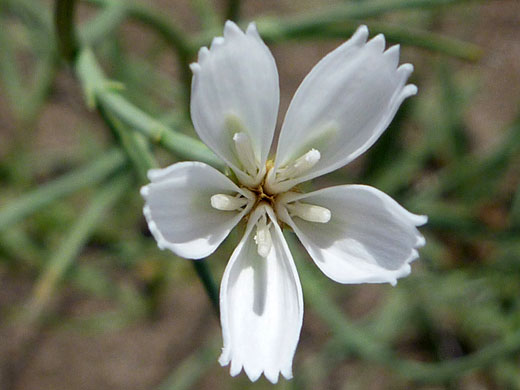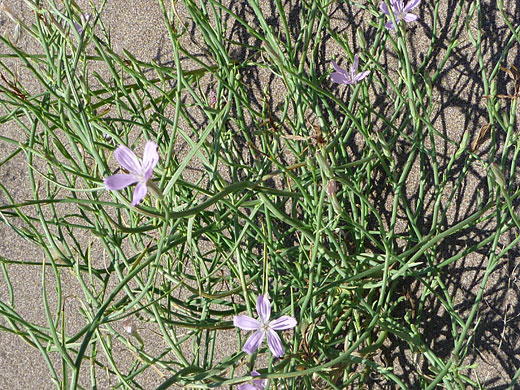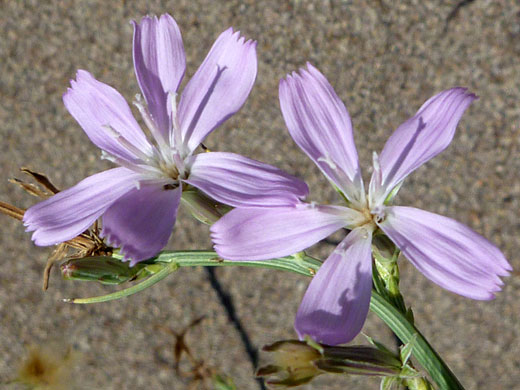Common names:
Rush skeletonplant, rushpink
Family:
Scientific name:
Lygodesmia juncea
Main flower color:
Range:
Mostly in the Great Plains, but also in all western states apart from California
Height:
Up to 25 inches
Habitat:
Open, dry, often sandy locations; semidesert, plains and foothills
Leaves:
Usually around 1.25 inches long; linear, with sharp tips. Hairless
Season:
June to September
Lygodesmia juncea is a bushy, freely-branching plant, producing a tangled mass of thin, winding, bluish-grey stems and short, linear leaves. Leaves on the upper stems are reduced to small scales. The stems can be upright or lie along the ground. They have prominent vertical grooves (striations).
The plant inhabits arid, often sandy locations at low to moderate elevations, and can produce up to 50 flowerheads. The toothed pink ray florets (usually five) are about half an inch long, pale pink to lavender to almost white in color, and each has a stamen protruding from the base. The involucre is narrow and somewhat elongated, with 5 to 7 linear phyllaries, which lack appendages, unlike some similar species.
The plant inhabits arid, often sandy locations at low to moderate elevations, and can produce up to 50 flowerheads. The toothed pink ray florets (usually five) are about half an inch long, pale pink to lavender to almost white in color, and each has a stamen protruding from the base. The involucre is narrow and somewhat elongated, with 5 to 7 linear phyllaries, which lack appendages, unlike some similar species.
All Contents © Copyright The American Southwest | Comments and Questions | Contribute | Site Map




